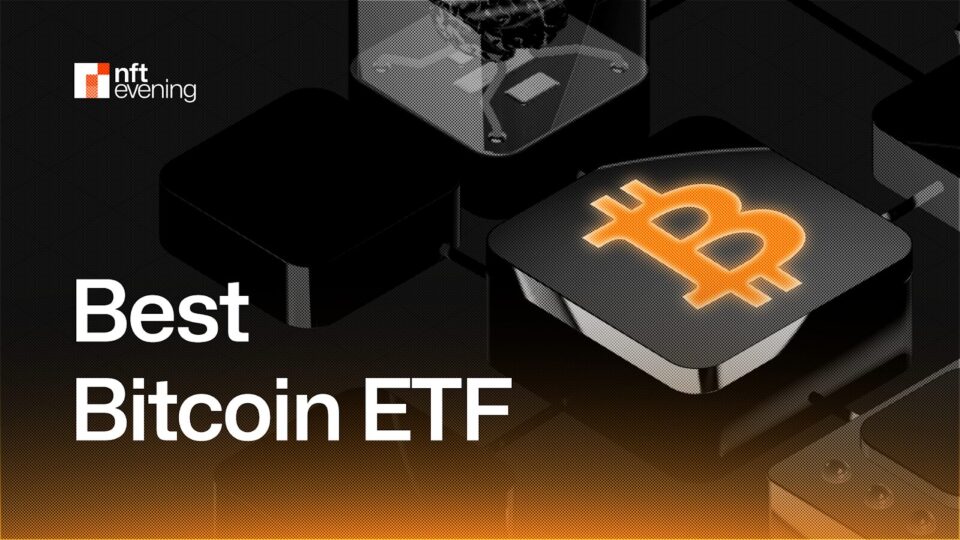Bitcoin ETFs provide an easy way to gain exposure to Bitcoin’s market movements without the complexity of owning cryptocurrency directly. In this guide, you’ll discover the best Bitcoin ETFs to buy, the factors to consider when choosing one, and how to effectively invest through a brokerage platform.
What Is a Spot Bitcoin ETF?
A Bitcoin Exchange-Traded Fund (ETF) allows you to invest in Bitcoin without directly owning the cryptocurrency. So, instead of buying Bitcoin yourself, you purchase shares in a fund that holds the actual Bitcoin. If you want to buy BTC, check out our list of top Bitcoin exchanges.
A Spot Bitcoin ETF, in particular, is an investment fund that holds actual Bitcoin rather than Bitcoin futures or other derivatives. This means the price of a Spot Bitcoin ETF closely tracks Bitcoin’s market value. Also, one of the main advantages of these ETFs is their ease of access. You can buy shares through a regular brokerage account, without the need to set up complex cryptocurrency wallets or private keys.
Top Spot Bitcoin ETFs
This table provides a snapshot of some of the top Spot Bitcoin ETFs available in the market. The listed ETFs are actively managed with a range of assets under management and varying expense ratios (Data Source: Coinglass).
Rank
ETF Ticker
ETF Name
Yield (%)
Assets Under Management (AUM)
Expense Ratio (Fees)
1
IBIT
iShares Bitcoin Trust ETF
5.26%
$57.69B
0.25%
2
FBTC
Fidelity Wise Origin Bitcoin Fund
2.07%
$21.99B
0.25%
3
GBTC
Grayscale Bitcoin Trust ETF
1.70%
$22.44B
1.50%
4
ARKB
ARK 21Shares Bitcoin ETF
3.32%
$5.25B
0.21%
5
BITB
Bitwise Bitcoin ETF
2.64%
$4.45B
0.20%
6
BTC
Grayscale Bitcoin Mini Trust ETF
3.25%
$4.29B
0.15%
8
HODL
VanEck Bitcoin ETF
1.83%
$1.47B
0.25%
How to Choose the Best Spot Bitcoin ETF
When choosing the best Spot Bitcoin ETF, there are a few key criteria to keep in mind. Here’s a breakdown of what you should look at:
- Expense Ratio: A lower expense ratio means you’re paying less in Bitcoin ETF fees, which leaves more of your money working for you. Over time, small differences in fees can really add up, so it’s worth considering when selecting an ETF.
- Assets Under Management (AUM): A higher AUM usually means the ETF is well-established and popular among investors. It also makes the ETF more liquid, meaning it’s easier to buy and sell shares without affecting the price. Moreover, a larger AUM suggests the fund has the backing and confidence of many investors, which can give you peace of mind.
- Tracking Error: Tracking error measures how closely the ETF’s performance matches Bitcoin’s actual price movements. The smaller the tracking error, the better, because you want your investment to reflect Bitcoin’s true market value. A significant tracking error could mean you’re not getting the full benefit of Bitcoin’s price swings.
- Liquidity: Liquidity is all about how easily you can buy or sell shares of the Bitcoin ETF stock without affecting its price too much. The more liquid an ETF is, the less likely you’ll face delays or price slippage when entering or exiting your position.
- Reputation and Trustworthiness of the Fund Manager: The reputation of the fund manager is crucial because you want to know your investment is in good hands. Well-known and trustworthy fund managers follow strict regulatory guidelines and have a track record of handling funds responsibly.
- Dividend Yield: While Bitcoin itself doesn’t generate dividends, some ETFs might earn income by lending or staking Bitcoin. If an ETF offers a yield, it can be a nice added benefit. Just be sure to check if the dividend yield is sustainable and aligns with your investment goals, as it’s not always guaranteed.
How to Buy Spot Bitcoin ETFs?
Step 1. Choose a Reliable Brokerage Platform
To invest in a Spot Bitcoin ETF, you’ll need access to a brokerage account that supports ETFs. Established platforms like Fidelity, Schwab, or other major brokers often list ETFs, including Spot Bitcoin ETFs, once they become available in your region.
Step 2. Open and Fund Your Brokerage Account
If you don’t already have a brokerage account, create one by completing the necessary registration steps. This involves providing personal information, verifying your identity, and linking your bank account. Deposit funds into your account to have the capital ready for your investment.
Step 3. Research Available Spot Bitcoin ETFs
Spot Bitcoin ETFs may vary by provider, fees, and market performance.



